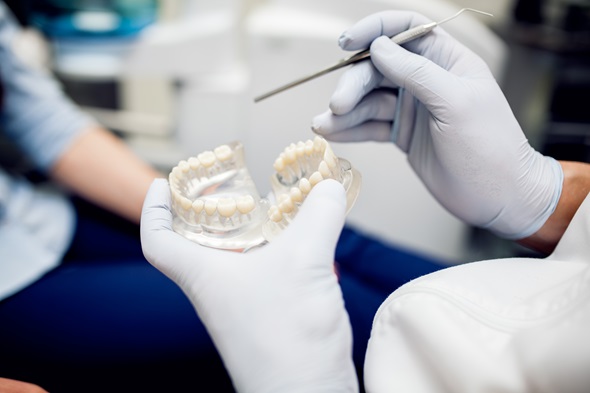Dental Crowns and Bridges

Dental crowns and bridges are specific types of treatments that are used to cover or repair damaged teeth or to replace any missing tooth. Their servicing not only restores the chewing capacity but also the beauty of a smile. Looking at the function and the procedure for carrying out dental crowns and bridges can make an individual aware and careful with their dental care and the eventual techniques and processes used.
What are Dental Crowns?
A dental crown, also known as a tooth crown, is a woman’s capping that surmounts or encircles a tooth, dental implant, or tooth deltoid whose strength, structure, contour, or thickness has been compromised or is waning. The crown’s purpose is not only cosmetic but also functional restoration of the tooth, as a critical addition is made to the tooth. A dental crown is made of ceramic, porcelain, metal, or a combination of the three.
When are Dental Crowns Needed?
- Severely Decayed Teeth: Such teeth are often filled with large crowns that can cover an extensive area of the tooth.
- Fractured or Broken Teeth: Dental crowns can assist with the management and restoration of teeth that have undergone extensive damage.
- Root Canal Treatment: Following a root canal, replacing crowns is important for restoring the tooth’s natural form and preventing further harm.
- Cosmetic Enhancement: Broken and unshapely teeth can be hidden by the presence of a crown.
- Dental Implants: Implants use crown replacement to finish off the entire prosthetic process.
Procedure for Getting a Dental Crown
- Preparation: The dentist will numb the area and prepare the tooth by cutting or removing decay and shaping it to enhance the fit of the crown.
- Impression: A dental impression is taken of the prepared tooth to make an individual crown. In the meantime, a temporary crown is placed to cover the prepared tooth.
- Fabrication: The impression is forwarded to the dental laboratory, where the crown is built to your specific teeth.
- Placement: Once the crown is finished, the temporary crown is removed, and the new crown is placed, after which it is glued onto the firm foundation. The dentist confirms that the crown fits correctly and, if necessary, modifies it to the appropriate position.
What are Dental Bridges?
Dental bridges are a type of fixed prosthesis designed to cover one or more gaps created by one or more lost teeth. It consists of one or more artificial teeth that are hollow inside and have dental crowns attached to them, which border on abutments.
Types of Dental Bridges
- Traditional Bridges: This is the most common type, consisting of one or more fake teeth connected to the side teeth with crowns.
- Cantilever Bridges: These are used when a single side tooth is available to support the bridge.
- Maryland Bridges: These are metal or porcelain frameworks fused to the backs of the neighboring teeth and cause the least damage to the surrounding structures.
- Implant-Supported Bridges: These are attached using dental implants, as opposed to crowns that sit on the remaining natural teeth.
Procedure for Getting a Dental Bridge
- Preparation: The teeth that will support the bridge arch are trimmed in some areas so that crowns can fit on them.
- Impression: To construct the bridge, an impression of the gap and its adjacent/prepared teeth is made.
- Temporary Bridge: A semi-permanent restoration called a temporary bridge protects the teeth and gums from exposure until the permanent bridge is ready.
- Fabrication: The impression is forwarded to a dental technician who will design and create the bridge to fit in with the rest of the dentition.
- Placement: The ‘trial’ temporary bridge is removed, and a mantle with the permanent bridge is also placed, but it is allowed to be adjusted and glued.
Benefits of Dental Crowns and Bridges
- Restored Functionality: Crowns and bridges, on the other hand, allow patients to chew food and speak without any problems.
- Aesthetic Improvement: They replace impermanent teeth and contribute positively to the smile by closing unsightly gaps and hidden cavities.
- Preventing Teeth Shifting: Bridges ensure that the adjoining teeth do not destabilize and shift towards the space caused by a missing tooth, which often leads to poor occlusion and other dental complications.
- Durability: With proper care, crowns and bridges can last many years, providing long-term solutions to dental problems.
Aftercare for Crowns and Bridges
- Oral Hygiene: Brush and floss at least twice daily. Remember to concentrate on the area surrounding the crown or bridge to avoid decay and inflammation of the gums.
- Regular Dental Visits: Regular casts are required for checkups and cleanups by your dentist, in our case, to keep the crowns and bridges intact.
- Avoid Hard Foods: Do not chew on ice or suck on hard candies that can put excessive strain on the crowns and bridges and cause damage.
- Address Issues Promptly: If you experience any discomfort that is not normal, any movement or wiggle arising from your crowns or bridges, misalignment, or fracture, please contact your dentist immediately for examination and treatment.
